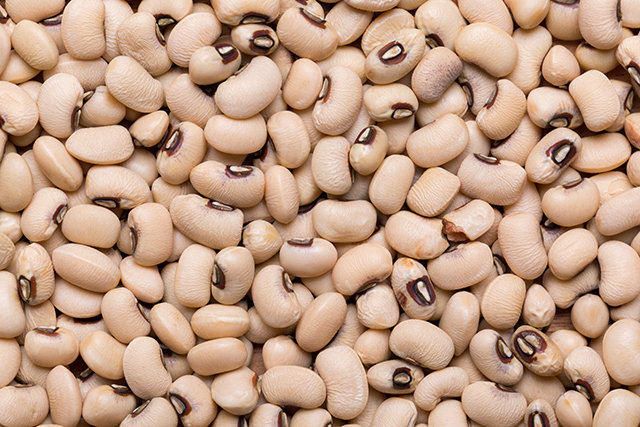 Parler
Parler Gab
Gab
Choose a plant that is abundant in the area you are foraging in
If you are planning to do the universal edibility test, focus on a plant that you can harvest a lot of. The universal edibility test is a thorough and lengthy process, and the last thing you want to do when your supplies are running out is to waste time doing it if you don't have plenty of the plant you are testing.Separate the plant parts
Start by putting all the plant parts into separate piles for testing:- Flowers
- Buds
- Leaves
- Stems
- Seeds
- Roots
Start with one part of the plant
Picking a part of the plant that you can harvest a lot will help make sure that the time you spend on the test is worth it.Smell the plant
If the plant you select has an unpleasant odor, do not eat that part of the plant. Strong or acidic smells should be avoided. Avoid any plant or part that smells like almonds since that is an indicator of a toxic compound.Touch the plant
Touch a piece of the plant to your wrist for 15 minutes. If you experience itching, burning or numbness, do not eat that plant part. Wait for eight hours until moving on to the next step to check for the development of rashes or other reactions. Do not eat anything during this step.Touch the plant to your lips
If you want, you can cook the pieces of the plant for this. Prepare it as you would eat other vegetables. Cooking plants is preferred because some plants are toxic when eaten raw, but not when cooked. Once the plant part is prepared, touch it gently to your lips to test for any burning, itching or numbness. If you experience any of these side effects in the next three minutes, do not eat that part of the plant.Put the plant on your tongue
Once you confirm that you can safely touch the plant to your skin, try placing a small portion of the plant in your mouth. Place the plant on your tongue for 15 minutes.Chew the plant
After 15 minutes, chew the plant and then hold it in your mouth for another 15 minutes without swallowing. If the plant tastes soapy or bitter, spit it out. Do not eat that part of the plant.Swallow the plant
Swallow the plant part. Wait for at least eight hours for any adverse reactions. If you don't notice any negative side effects, prepare at least 1/3 cup of that plant part and eat it. If you have no reaction after waiting another eight hours, then that part of the plant is edible. Keep in mind that you need to repeat this entire process for all of the parts of the plant. In some cases, the entire plant could be edible, but some plants may have select parts that are edible.More foraging tips for preppers
Here are more tips that can help you forage for wild edibles safely when SHTF: Do your research When foraging for plants, make sure you can identify a plant properly before touching or consuming it. Improve your foraging skills by attending plant walks with an expert, studying basic botany, cross-referencing different illustrated and updated guidebooks, or using educational websites. Familiarize yourself with the area Study up on the area you plan to forage. Read up on poisonous or endangered plants that grow there, and find out what edibles are abundant. Avoid locations near factories, golf courses, roads, or places where the water and soil could be contaminated. Look for off-trail areas away from human activity, which are usually safer. Harvest responsibly Check local land management guidelines for any harvesting or foraging limits. Forage only in areas and amounts that are permitted so you don't get in trouble. Take only what you need and leave enough for the wildlife and for regrowth. This means taking no more than five percent of one species in a certain area. Look for edible weeds When foraging, look for weedy patches where edible species grow in abundance. Look for edible weeds like dandelion and nettle. Walk lightly Be mindful of your impact when venturing off the trail while foraging. Leave no trace and walk on durable surfaces like logs and rocks. Avoid trampling other flora as you explore an area. Read up on poisonous plants and mushrooms Once you learn how to recognize edible plants, take the time to also learn how to identify poisonous plants. Some poisonous plants can give you a rash, but others could kill you if you consume enough of them. Learn how to recognize the traits of toxic species, especially those that look similar to edible and medicinal plants. If you want to save time, buy and review an illustrated edible plant guide. Remember that the universal edibility test does not work for mushrooms or other types of fungus. If you want to forage for mushrooms, get a mushroom guide. Learning about local plants using a guide may be easier, but knowing how to test a plant's edibility is a useful skill for any prepper. Visit GreenLivingNews.com to read more articles about foraging. Watch the video below to learn how to forage for wild yam. This video is from the Foraging Truth channel on Brighteon.com.More related stories:
5 Medicinal mushrooms you can grow in your home garden or forage in your backyard. How to start an herbal medicine cabinet. Prepper recipes: How to make delicious acorn pancakes. Sources include: TruePrepper.com Backpacker.com Brighteon.comThese 8 odors inside your house can mean BIG trouble
By Olivia Cook // Share
Top 11 PRIORITIES for America in order to save the Republic
By S.D. Wells // Share
American citizens will face huge fines, jail sentences if RESTRICT Act passes
By Ethan Huff // Share
Bug out survival planning: How to get out of the city after SHTF
By Zoey Sky // Share
Food supply 101: The best beans for long-term storage
By Zoey Sky // Share
Biden White House sought to censor private WhatsApp messages questioning vaccine safety
By Ethan Huff // Share
Governments continue to obscure COVID-19 vaccine data amid rising concerns over excess deaths
By patricklewis // Share
Tech giant Microsoft backs EXTINCTION with its support of carbon capture programs
By ramontomeydw // Share
Germany to resume arms exports to Israel despite repeated ceasefire violations
By isabelle // Share










